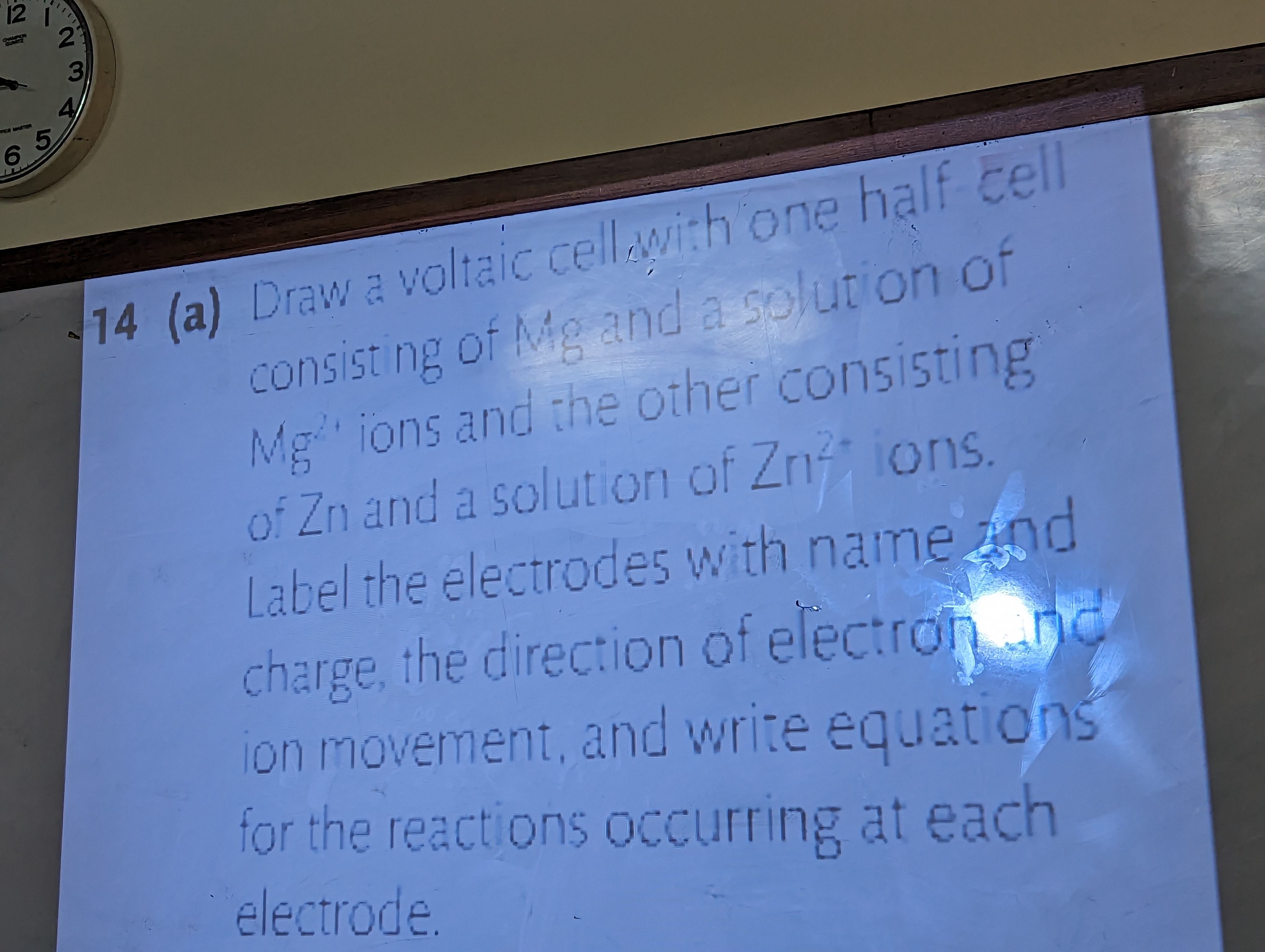Draw a voltaic cell with one half cell consisting of Mg and a solution of Mg²⁺ ions and the other consisting of Zn and a solution of Zn²⁺ ions. Label the electrodes with name and c... Draw a voltaic cell with one half cell consisting of Mg and a solution of Mg²⁺ ions and the other consisting of Zn and a solution of Zn²⁺ ions. Label the electrodes with name and charge, the direction of electron and ion movement, and write equations for the reactions occurring at each electrode.

Understand the Problem
The question is asking to draw a voltaic cell comprising magnesium and zinc half-cells, label the electrodes, indicate the direction of flow for electrons and ions, and provide equations for the reactions at each electrode.
Answer
Magnesium anode (Mg → Mg²⁺ + 2e⁻) and zinc cathode (Zn²⁺ + 2e⁻ → Zn). Electrons flow Mg to Zn.
The final answer is: The voltaic cell consists of a magnesium anode, where oxidation occurs (Mg → Mg²⁺ + 2e⁻), and a zinc cathode, where reduction occurs (Zn²⁺ + 2e⁻ → Zn). Electrons flow from Mg to Zn. The salt bridge allows ionic movement to maintain charge balance.
Answer for screen readers
The final answer is: The voltaic cell consists of a magnesium anode, where oxidation occurs (Mg → Mg²⁺ + 2e⁻), and a zinc cathode, where reduction occurs (Zn²⁺ + 2e⁻ → Zn). Electrons flow from Mg to Zn. The salt bridge allows ionic movement to maintain charge balance.
More Information
In a voltaic cell, spontaneous redox reactions generate electrical energy. The anode undergoes oxidation, while the cathode undergoes reduction. Maintaining a flow of ions prevents charge buildup.
Tips
Common mistakes include reversing the anode and cathode labels, or misrepresenting the direction of electron flow.
Sources
- Voltaic Cells - Chemistry LibreTexts - chem.libretexts.org
- [PDF] Using Half-Reactions to Sketch a Galvanic Cell - arthurscience.weebly.com
AI-generated content may contain errors. Please verify critical information